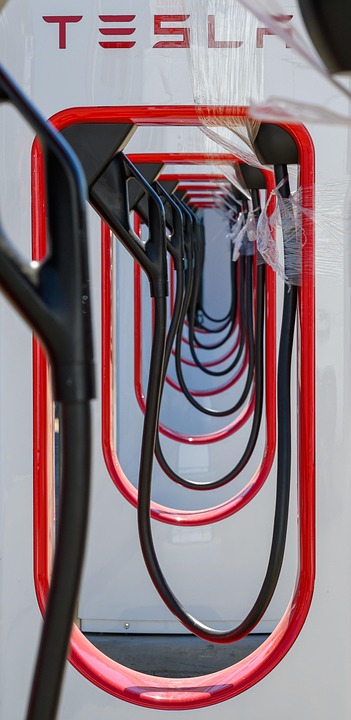Charging Ahead: The Latest Innovations in Electric Vehicle Technology
As the world transitions to greener alternatives, electric vehicles (EVs) have emerged as a cornerstone of sustainability. Today’s headlines are filled with cutting-edge advancements that are making EVs more accessible, efficient, and desirable than ever. This article delves into the most exciting innovations that are propelling the EV industry forward.
The EV Revolution and Its Importance
Electric vehicles are no longer a niche market; they are fast becoming a vital component of the auto industry. In fact, a report from the International Energy Agency indicates that global electric vehicle sales surged to 6.6 million units in 2021, representing a 108% increase from 2020. This growth is not just about reducing emissions; it’s also about reshaping economies and communities.
Breakthrough Battery Technology
One of the most significant innovations in electric vehicles is the development of advanced battery technologies. Traditional lithium-ion batteries are giving way to solid-state batteries, which promise higher energy densities, faster charging times, and improved safety. According to a study by the U.S. Department of Energy, solid-state batteries can deliver nearly twice the energy capacity of lithium-ion cells while reducing the risk of thermal runaway, a major concern for EV manufacturers.
Example: QuantumScape’s Solid-State Batteries
A prime example of this innovation is QuantumScape, a California-based company that claims its solid-state batteries could achieve a range of up to 400 miles on a single charge. By utilizing a ceramic electrolyte instead of a liquid one, QuantumScape aims to enhance the performance of electric vehicles significantly. The promise is not only a longer range but also a reduction in charging times, potentially powering up to 80% capacity in just 15 minutes.
Enhanced Charging Infrastructure
The charging landscape is transforming rapidly, with major investments being made to enhance infrastructure. Tesla’s Supercharger network continues to expand, providing more charging stations in urban areas and along highways. In 2022 alone, Tesla installed over 1,400 Superchargers globally.
Moreover, companies are also exploring wireless charging technology. For instance, BMW has been developing inductive charging systems that allow EVs to charge simply by parking over a specialized pad. This innovation removes the hassle of plugging in and could redefine how we think about charging our vehicles.
Key Statistics about Charging
- Increased Availability: As of 2023, there are over 100,000 public charging stations across the United States, compared to just 20,000 in 2017.
- Growth of Fast Charging: The number of fast chargers has increased by 300% in the past five years, making long-distance travel by electric vehicles far more feasible.
The Role of Smart Technology
The integration of smart technology is becoming increasingly prominent in electric vehicles. Innovations in software and connectivity provide features such as real-time diagnostics, predictive maintenance, and streamlined navigation to nearby charging stations. For instance, many new EVs are equipped with machine learning algorithms that optimize battery usage based on the user’s driving habits.
Example: Ford’s Innovative Approach
Ford’s Mustang Mach-E exemplifies how automakers are utilizing smart technology. The vehicle comes equipped with advanced software that not only monitors battery health but also provides updates to improve performance over time. Additionally, the vehicle’s built-in navigation system can suggest charging stops during long trips based on battery levels and proximity to charging stations.
Sustainable Manufacturing Practices
As the production of electric vehicles grows, sustainability in manufacturing has become a pressing concern. EV manufacturers are increasingly focusing on reducing their carbon footprints. For instance, Tesla’s Gigafactory aims to produce batteries with zero waste, while BMW has committed to using 100% renewable energy in its production by 2030.
Example: Rivian’s Green Manufacturing
Rivian, an electric vehicle startup, has emphasized eco-friendly manufacturing. The company claims its vehicles are built with 100% clean energy and has made significant strides in minimizing plastic use in production. Such practices not only enhance the sustainability of electric vehicles but also appeal to environmentally conscious consumers.
Looking Ahead
As we navigate through 2023 and beyond, the future of electric vehicles is illuminated by innovation. With advancements in battery technology, expanded charging infrastructure, integrated smart technology, and sustainable manufacturing practices, it’s evident that the EV revolution is just beginning.
In conclusion, electric vehicles are charge ahead into a new age, merging technology and sustainability. For those interested in learning more about the transformative impact of electric vehicles, you can explore additional articles on buzzo.live, such as "The Economic Impact of Electric Vehicles" and "Top 10 Electric Cars to Look for in 2024". For more comprehensive data and insights, visit external sources like the International Energy Agency or U.S. Department of Energy.
Suggested Images:
-
Image of a Solid-State Battery Prototype
Alt text: Solid-State Battery Prototype in Electric Vehicle Technology
- Image of an EV Charging Station
Alt text: Electric Vehicle Charging Station in Urban Setting
By keeping these innovations in mind, we are not just observers but participants in the evolving landscape of transportation that prioritizes both efficiency and environmental consciousness. The revolution is not merely electric; it’s transformative.


